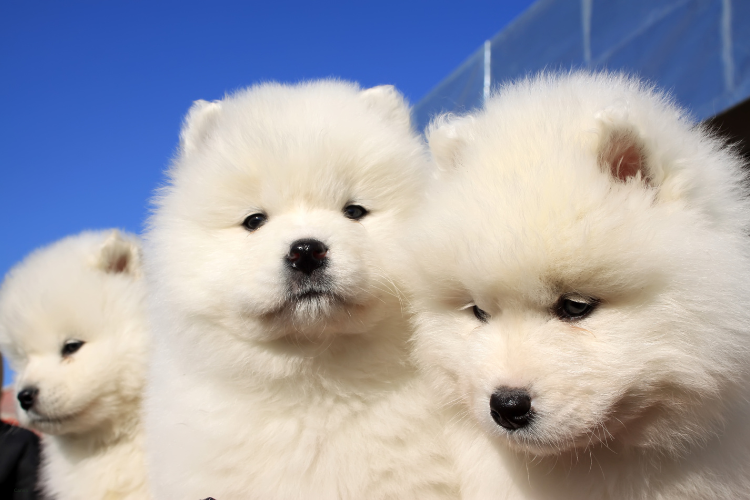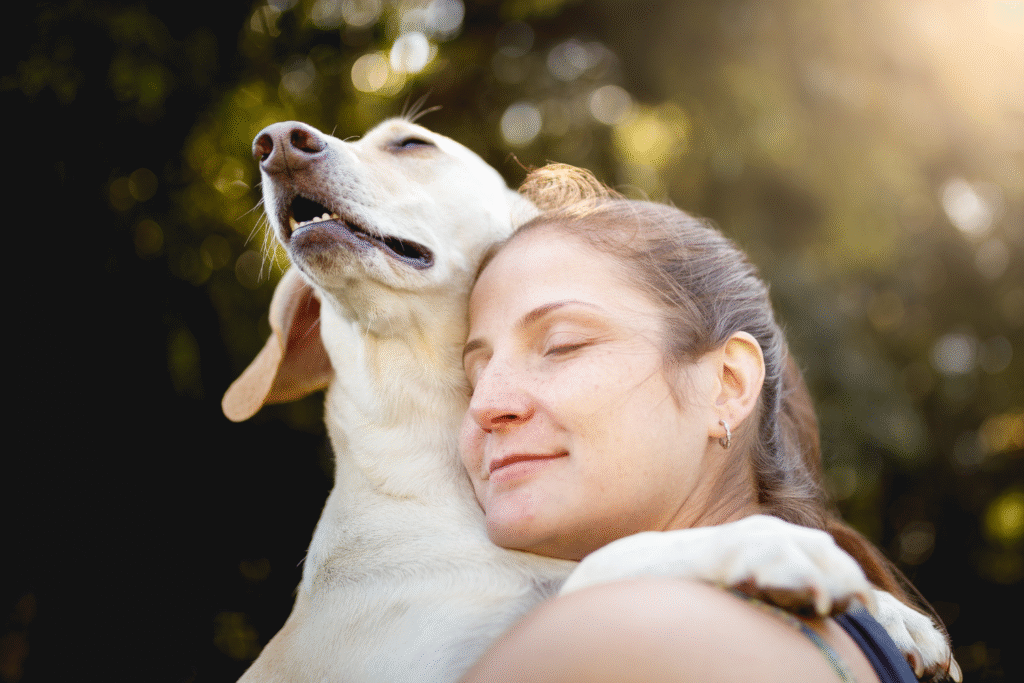Scientists finally cracked the code on canine expressions after decades of research.

That goofy grin spreading across your dog’s face when you walk through the door isn’t just your imagination running wild. Dogs do make facial expressions, and they’re far more sophisticated than we ever realized. Recent breakthroughs in canine behavioral science have revealed that our four-legged companions use their faces to communicate in ways that would make a human diplomat jealous.
For years, scientists dismissed animal facial expressions as purely involuntary emotional displays. Now we know better, and the research is reshaping everything we thought we understood about inter-species communication.
1. Dogs evolved new facial muscles specifically for human communication.

Domestication literally rewired dogs’ faces for better human interaction. When researchers dissected dog and wolf heads, they discovered something remarkable: dogs possess a levator anguli oculi medialis muscle that wolves completely lack. This specialized muscle allows dogs to raise their inner eyebrows intensely, creating those heartstring-tugging “puppy dog eyes” that wolves simply cannot produce. According to a study published in the Proceedings of the National Academy of Sciences, this evolutionary adaptation occurred in just 33,000 years of domestication.
The transformation wasn’t accidental. Dogs who could make human-like facial expressions had a distinct survival advantage during domestication. Their expressive eyebrows triggered nurturing responses in humans, leading to better care and increased reproductive success. This muscle didn’t exist in their wild ancestors, making it one of the fastest documented evolutionary changes in facial anatomy among mammals.
2. Canine smiles aren’t about happiness but attention-seeking behavior.

Here’s where things get interesting: dogs produce significantly more facial expressions when humans are watching them compared to when they’re alone. Researchers discovered this by filming dogs in controlled environments where human attention varied systematically. The presence of food, despite being highly arousing for dogs, didn’t increase their facial expressions at all, as reported by researchers from the University of Portsmouth.
What this means is revolutionary. Dogs aren’t simply displaying emotions through their faces; they’re actively trying to communicate with us. When your dog “smiles” at you, they’re not necessarily expressing joy in the way we understand it. Instead, they’re using a sophisticated communication strategy that evolved specifically to capture and maintain human attention. This behavior represents a form of interspecies dialogue that scientists are only beginning to decode.
3. The “smile” triggers an oxytocin loop between dogs and humans.

The biochemistry behind dog-human bonding reads like science fiction. When dogs and humans engage in mutual gazing, both species experience increased oxytocin levels—the same hormone involved in mother-infant bonding. Research conducted by Dr. Miho Nagasawa at Azabu University demonstrated that this oxytocin feedback loop creates a self-reinforcing cycle of attachment. Dogs who maintained longer eye contact with their owners showed higher oxytocin levels, which in turn increased their owners’ oxytocin levels.
This hormonal synchronization explains why dog “smiles” feel so emotionally powerful to us. The facial expression triggers our parental instincts, flooding our brains with bonding chemicals. Meanwhile, the positive human response reinforces the dog’s behavior, creating an endless loop of interspecies affection. Wolves raised by humans don’t produce this same biochemical response, proving that this adaptation is uniquely domestic.
4. Different facial expressions communicate distinct emotional states.

Dogs don’t just have one generic “happy” expression—they’ve developed a nuanced repertoire of facial communications. Scientists using the DogFACS (Dog Facial Action Coding System) have identified specific muscle movements that correspond to different emotional contexts. Brow raising makes eyes appear larger and more juvenile, while lip corner movements can signal everything from playfulness to anxiety.
Research shows dogs can even differentiate between positive anticipation and frustration using distinct facial patterns. During positive anticipation, dogs show relaxed facial muscles and soft eye expressions. Frustration, however, produces tighter facial muscles and more intense eye movements. These subtle differences suggest dogs are constantly providing us with detailed emotional information if we know how to read it.
5. Dogs read human facial expressions better than we read theirs.

The communication highway runs both directions, but dogs are better travelers. Studies using eye-tracking technology reveal that dogs spend significantly more time looking at human faces than humans spend looking at dog faces. More importantly, dogs can learn to distinguish human facial expressions, including recognizing smiles on both familiar and unfamiliar faces.
However, their facial reading abilities have limitations. Dogs trained to recognize smiling faces of one gender struggle when the gender switches, suggesting their recognition is partially based on learned associations rather than innate understanding. This mirrors how human infants learn to read faces—through repeated exposure and social feedback rather than instinctive knowledge.
6. Breed differences affect facial expression capabilities.

Not all dogs are created equal when it comes to facial expressiveness. Breeds with flatter faces, like bulldogs and pugs, have different muscular arrangements that limit their range of expressions compared to breeds with longer muzzles. Interestingly, Siberian huskies, being more closely related to wolves, often lack some of the specialized facial muscles found in other domestic breeds.
These anatomical differences mean some dogs are naturally more expressive than others. Breeds developed more recently through selective breeding tend to have more pronounced facial communication abilities. This suggests that human preference for expressive dogs continued to shape canine facial evolution even after initial domestication, with breeders unconsciously selecting for dogs with more human-like communication skills.
7. Context determines the meaning of canine facial expressions.

A dog’s “smile” can mean vastly different things depending on the situation. The same raised lip corners might indicate playful excitement during a game of fetch, submissive appeasement when being scolded, or attention-seeking behavior when wanting treats. Scientists emphasize that interpreting dog facial expressions requires understanding the entire behavioral context, not just isolated facial movements.
Environmental factors also influence expression frequency and intensity. Dogs produce more facial expressions in familiar settings with trusted humans compared to stressful or unfamiliar environments. This context dependency makes dogs remarkably sophisticated communicators, adjusting their facial expressions based on their audience and circumstances much like humans do in social situations.
8. Facial expressions develop through social learning throughout life.

Puppies aren’t born knowing how to make effective facial expressions with humans. Like human children learning to smile, young dogs develop their communication skills through trial and error. Successful expressions that result in positive human responses are reinforced and become more frequent, while ineffective attempts fade away.
This learning process continues throughout a dog’s life, with older dogs often becoming more skilled at reading and producing human-directed facial expressions. Dogs living in multi-human households develop more varied expression repertoires compared to those with single owners, suggesting their communication skills expand based on social exposure. The implications are profound: every interaction we have with our dogs is teaching them how to better communicate with us.
9. Medical conditions can affect canine facial expression ability.

Neurological conditions, facial injuries, or genetic disorders can impair a dog’s ability to produce normal facial expressions, potentially affecting their ability to communicate with humans. Dogs with facial paralysis or muscle weakness may struggle to produce the expressions that typically elicit positive human responses, potentially impacting their social relationships.
Understanding these limitations helps explain why some dogs seem less “expressive” than others. It’s not always a matter of personality or training—sometimes it’s physical capability. Veterinary behaviorists increasingly recognize that changes in facial expression patterns can be early indicators of medical issues, making facial communication assessment a valuable diagnostic tool.
10. Dogs adjust their expressions based on human emotional states.

Perhaps most remarkably, dogs modify their facial expressions in response to human emotions. Research shows dogs produce different expression patterns when interacting with happy versus sad humans. They seem to recognize that different human emotional states require different communicative approaches, demonstrating remarkable social intelligence.
This adaptive behavior suggests dogs are not just producing programmed responses but are actively processing human emotional information and adjusting their communication accordingly. When humans appear distressed, dogs often increase their use of appeasing facial expressions and reduce playful ones. This emotional attunement represents one of the most sophisticated aspects of dog-human communication, rivaling the social awareness found in some primates.
